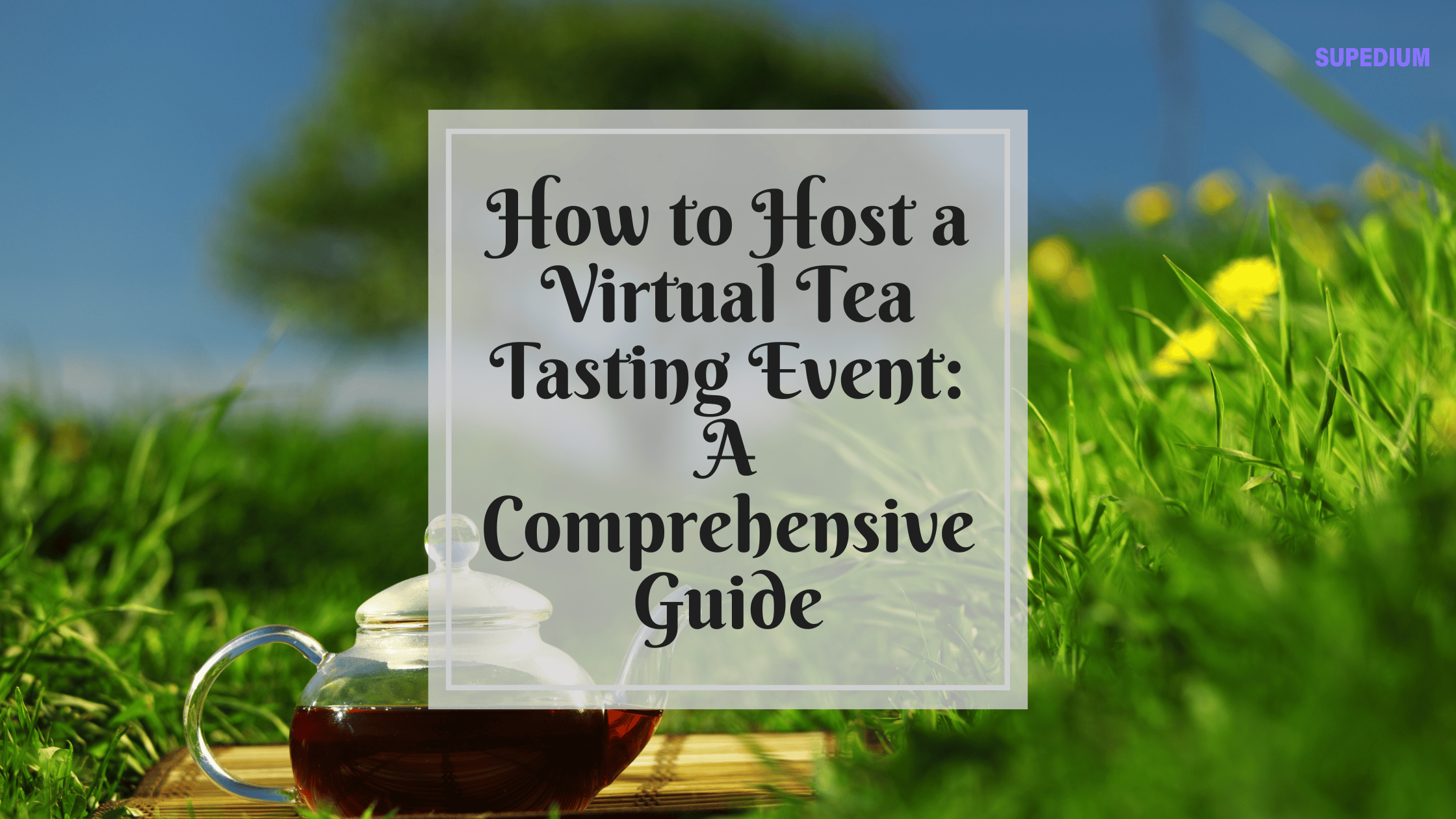Table of Contents
![]()
In the age of digital connection, virtual events have become a popular way to bring people together across distances. One such engaging and educational virtual event is a tea tasting. Whether you’re a tea enthusiast looking to share your passion or a host aiming to create a unique experience for friends and colleagues, a virtual tea tasting can be both enjoyable and insightful. This guide will walk you through the steps to plan, execute, and follow up on a successful virtual tea tasting event.
I. Introduction
A. Purpose of the Event
Hosting a virtual tea tasting serves multiple purposes. It fosters social connection by allowing people to come together over a shared interest in tea. It also has an educational aspect, providing an opportunity to learn about different tea varieties, brewing techniques, and tasting notes. Additionally, it offers entertainment by creating a unique and interactive experience that can be enjoyed from the comfort of one’s home.
B. Benefits of Hosting Virtually
The virtual format offers several benefits:
- Accessibility: Participants from various locations can join without the need for physical travel.
- Flexibility: The event can be tailored to suit different schedules and time zones.
- Cost-Effectiveness: Hosting online eliminates the need for physical space and reduces overhead costs.
II. Planning and Preparation
A. Define Objectives and Goals
Start by clarifying what you want to achieve with your event. Objectives might include:
- Educational Focus: Offering insights into various tea types and brewing methods.
- Social Interaction: Creating opportunities for participants to engage in conversation and share experiences.
- Entertainment Value: Ensuring the event is enjoyable and memorable.
B. Select a Platform
Choose a virtual meeting platform that suits your needs:
- Zoom: Known for its user-friendly interface and features like breakout rooms and screen sharing.
- Microsoft Teams: Integrates with other Microsoft tools and supports large meetings.
- Google Meet: Offers a simple interface and seamless integration with Google Calendar.
C. Choose a Date and Time
Select a date and time that accommodates participants from different time zones. Be mindful of potential conflicts with major holidays or other significant events to ensure maximum attendance.
D. Create a Budget
Establish a budget that covers:
- Tea Samples: Purchasing and shipping costs.
- Technology: Any necessary subscriptions or tools.
- Marketing: Costs for promotional materials or advertising.
E. Design the Event Structure
Plan the flow of your event, including:
- Opening Remarks: Introduce the event and outline the objectives.
- Tasting Segments: Organize the tasting by type of tea or thematic elements.
- Interactive Elements: Include Q&A sessions, polls, or group discussions.
- Closing: Summarize the event, gather feedback, and thank participants.
III. Tea Selection and Preparation
A. Choose the Tea Types
Decide on the types of tea to feature. Options include:
- Varieties: Such as black, green, white, oolong, and herbal teas.
- Themes: Regional teas, historical blends, or specific flavor profiles.
B. Source and Purchase Tea
Find sources for your tea:
- Local Suppliers: Support local businesses or specialty tea shops.
- Online Retailers: Explore a wide selection of teas from online stores.
- Sample Packs: Consider purchasing pre-packaged tasting sets to simplify the process.
C. Prepare and Ship Tea Samples
Ensure tea samples are fresh and properly packaged. Consider the following:
- Packaging: Use airtight containers to maintain freshness.
- Shipping: Plan for timely delivery so that samples arrive before the event.
- Instructions: Include detailed brewing instructions and tasting notes.
D. Develop a Tasting Guide
Create a guide to enhance the tasting experience:
- Brewing Instructions: Provide specific details for each tea, including brewing time, temperature, and quantity.
- Tasting Notes: Describe the aroma, flavor profile, and appearance of each tea.
- Evaluation Criteria: Help participants assess the tea based on aroma, taste, body, and finish.
IV. Event Promotion and Registration
A. Create Marketing Materials
Design materials to promote your event:
- Event Flyer: Include essential details like date, time, and registration information.
- Social Media: Share updates and reminders across various platforms.
- Email Invitations: Send personalized invites to potential attendees.
B. Set Up Registration
Facilitate participant sign-ups with:
- Registration Form: Collect necessary information and preferences.
- Confirmation Emails: Provide participants with event details and joining instructions.
C. Engage with Participants Pre-Event
Keep participants informed and excited:
- Pre-Event Reminders: Send reminders with final details and preparation tips.
- Pre-Event Survey: Collect information on participants’ tea preferences or any dietary restrictions.
V. Hosting the Event
A. Technical Setup
Ensure a smooth event experience by:
- Testing Equipment: Check your camera, microphone, and internet connection before the event.
- Platform Familiarization: Learn how to use features such as screen sharing and breakout rooms.
B. Facilitate the Event
Guide the event smoothly:
- Welcome and Introductions: Start with a warm welcome and an overview of the agenda.
- Guide the Tasting: Lead participants through each tea, discussing characteristics and encouraging feedback.
- Interactive Elements: Engage participants with polls, Q&A sessions, or breakout discussions.
C. Manage Time
Keep the event on track:
- Adhere to Schedule: Follow the planned timing for each segment.
- Allow Flexibility: Be prepared to adjust timing based on participant engagement and discussions.
D. Address Issues
Handle any challenges:
- Technical Problems: Have a backup plan for common issues.
- Participant Questions: Address any questions or concerns promptly.
VI. Post-Event Activities
A. Gather Feedback
Collect feedback to evaluate the event:
- Surveys: Send out surveys to participants to gauge their experience.
- Comments: Gather additional comments and suggestions for improvement.
B. Follow Up
Maintain engagement after the event:
- Thank-You Notes: Send appreciation messages to participants.
- Share Recap: Provide a summary of the event and any additional resources or materials.
C. Analyze and Reflect
Evaluate the success of the event:
- Assess Objectives: Determine if the event goals were met.
- Identify Improvements: Note areas for improvement to enhance future events.
D. Plan for Future Events
Prepare for upcoming events:
- Event Ideas: Consider new themes or formats for future tastings.
- Build Community: Engage with participants to build an ongoing community of tea enthusiasts.
By following these steps, you can host a successful virtual tea tasting that is both enjoyable and educational. From planning and preparation to execution and follow-up, each phase plays a crucial role in creating a memorable event. Happy hosting!
Share This





Be the first to comment